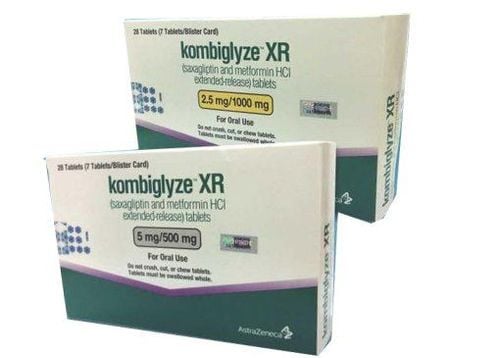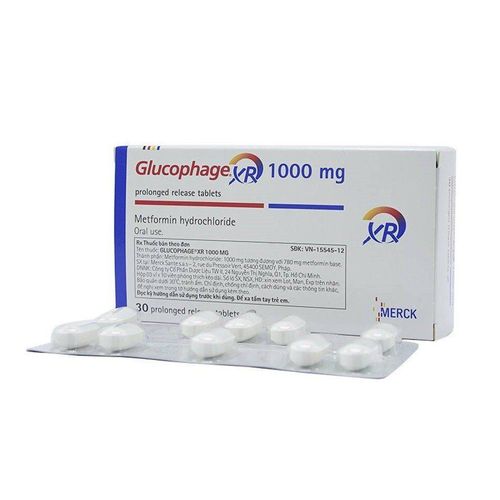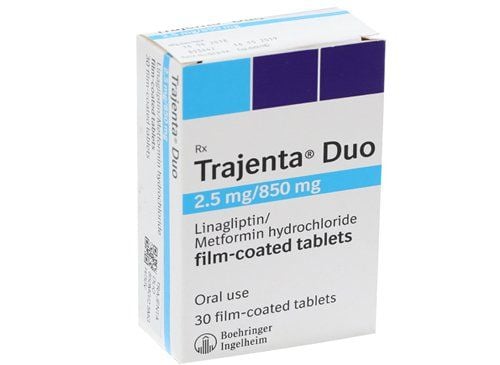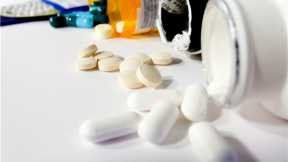This is an automatically translated article.
Gliclada medicine 30mg is used in the treatment of diabetes. So what is the effect of Gliclada 30mg and how to use this medicine?
1. Uses of Gliclada 30mg
Gliclada 30mg drug is made in the form of tablets, the main ingredient is Gliclazide 30mg. The drug has a hypoglycemic effect and is used to treat diabetes. Gliclazide reduces blood sugar by stimulating insulin secretion from the β cells of the islets of Langerhans in the pancreas. The effect of increasing postprandial insulin and C-peptide secretion persisted after 2 years of treatment.
In addition to its metabolic properties, gliclazide also has vascular effects. Gliclazide reduces thrombosis by 2 mechanisms implicated in diabetic complications:
Partial inhibition of platelet aggregation and adhesion, with a decrease in markers of platelet activation ( beta thromboglobulin, thromboxane B2). Vascular endothelial fibrinolytic effects with an increase in tPA activity. Gliclada 30mg is indicated in the treatment of: Type 2 diabetes.
Accordingly, the drug Gliclada 30mg is contraindicated in the following cases:
People with hypersensitivity to gliclazide, other sulfonylurea antidiabetic drugs, sulphonamide group drugs, or any of the excipients of the drug. Type 1 diabetes. Pre-coma and diabetic coma. Diabetic ketoacidosis. Severe infections Severe trauma Patients undergoing major surgery. Severe kidney or liver failure. Treatment with miconazole. Women who are breastfeeding.
2. Dosage and how to use Gliclada 30mg
Gliclada is used orally, the patient needs to take a single dose in the morning, swallow the tablet whole with water. Do not chew or crush the tablet.
Dosage of Gliclada 30mg should be according to the doctor's prescription. The recommended dose of Gliclada 30mg for adults is as follows:
Daily dose of 30 - 120 mg single dose at breakfast. If you forget to take your medicine, do not increase your dose the next day.
The starting dose is 30 mg/day.
If blood glucose is controlled, maintain treatment with this dose. If blood glucose is not controlled, increase the dose to 60mg, 90mg or 120mg/day in subsequent steps. The interval between two consecutive dose increments should be at least 1 month, except in the case of patients whose blood glucose has not decreased after 2 weeks of treatment. In this case, your doctor may increase your dose of Gliclada 30mg at the end of the second week of treatment. Maximum dose 120 mg/day.
When using an overdose of Gliclada 30mg can cause hypoglycemia. Cases of hypoglycemia without loss of consciousness or neurological signs will be treated with carbohydrate supplementation, dose adjustment of Gliclada 30mg or dietary changes.
Severe hypoglycemic reactions such as coma, convulsions, and neurological disturbances may occur and require immediate emergency hospital admission.
If hypoglycemic coma occurs, the patient should be given 50 mL of glucose solution (20% to 30%) rapidly intravenously. Then continue infusion of the dilute glucose solution (10%) at a rate appropriate to maintain blood sugar levels above 1g/l. Patients should be closely monitored and, depending on the patient's specific condition, the physician will make a decision as to whether continued monitoring is necessary. Dialysis is not effective in patients with hypoglycaemia due to an overdose of Glicclada 30 mg, because of the strong binding force between gliclazide and plasma proteins. If you forget a dose of Gliclada 30mg, take it as soon as you remember. However, if it is almost time for your next dose, skip the missed dose and take your next dose as usual. Note that do not take double the prescribed dose.
3. Side effects of the drug Gliclada 30mg
During treatment with Gliclada 30mg extended release drug, it may cause hypoglycemia if meals are irregular, especially skipping meals. Symptoms of hypoglycemia include: Headache, intense hunger, nausea, vomiting, fatigue, agitation, aggression, lack of concentration, sleep disturbances, decreased awareness, slow reactions , depression, visual disturbances, language disturbances, tremors, asthenia, dizziness, sense of loss, loss of self-control, sensory disturbances, delirium, convulsions, bradycardia, shallow breathing , drowsiness, loss of consciousness can lead to coma and death. In addition, signs of sympathetic hyperactivity during hypoglycemia were observed including: Sweating, cold skin, tachycardia, increased blood pressure, anxiety, palpitations, angina, and confusion. heartbeat.
Usually, the symptoms of hypoglycemia go away after taking carbohydrates (sugar). However, artificial sweeteners are not effective in this case. If hypoglycemia is severe or persists even if temporarily controlled with sugar, the person needs immediate medical or emergency treatment.
Other undesirable effects may be encountered when using Gliclada 30mg: Digestive disorders with symptoms such as: abdominal pain, nausea, vomiting, indigestion, diarrhea, constipation. However, these symptoms are uncommon. These side effects can be avoided or minimized by taking Gliclada 30mg with breakfast.
The following side effects of Gliclada 30mg have been reported rarely:
Skin and subcutaneous tissue side effects: Rash, urticaria, erythema, pruritus, bullous reaction (Stevens- Johnson, toxic epidermal necrolysis). Side effects on the blood and lymphatic system: Changes in hematology are very rare, which may include anemia, leukopenia, thrombocytopenia, and agranulocytosis. These disorders are reversible upon discontinuation of Gliclada. Side effects on hepatobiliary: Increased liver enzymes (AST, ALT alkaline phosphatase), hepatitis. Discontinue treatment with Gliclada if cholestatic jaundice occurs. Eye side effects: Transient visual disturbances, especially at the beginning of treatment, may occur, due to changes in blood sugar levels. When experiencing side effects of Gliclada, you need to stop using it and notify your doctor or immediately go to the nearest medical facility for timely treatment.
4. Gliclada drug interactions with other drugs
The combination of Gliclada and Miconazole (systemic route or oral mucosal gel) is contraindicated because it will increase the hypoglycaemic effect, starting with symptoms of hypoglycaemia or possibly causing coma. .The combination of Gliclada is not recommended with:
Phenylbutazone (systemic route): When used in combination with Gliclada, the hypoglycemic effect is increased. Alcohol: When used in combination with Gliclada, there is an increase in hypoglycemic reactions which may lead to the onset of coma. Therefore, alcohol or drugs containing alcohol should not be consumed while being treated with Gliclada. Combinations of Gliclada requiring precautions: Other antidiabetic agents (eg, insulin, acarbose, biguanide), angiotensin-converting enzyme inhibitors (captopril enalapril), β-blockers, fluconazole, antagonists H2 receptors, MAOIs, sulfonamides, and non-steroidal anti-inflammatory drugs.
Follow Vinmec International General Hospital website to get more health, nutrition and beauty information to protect the health of yourself and your loved ones in your family.
Please dial HOTLINE for more information or register for an appointment HERE. Download MyVinmec app to make appointments faster and to manage your bookings easily.













